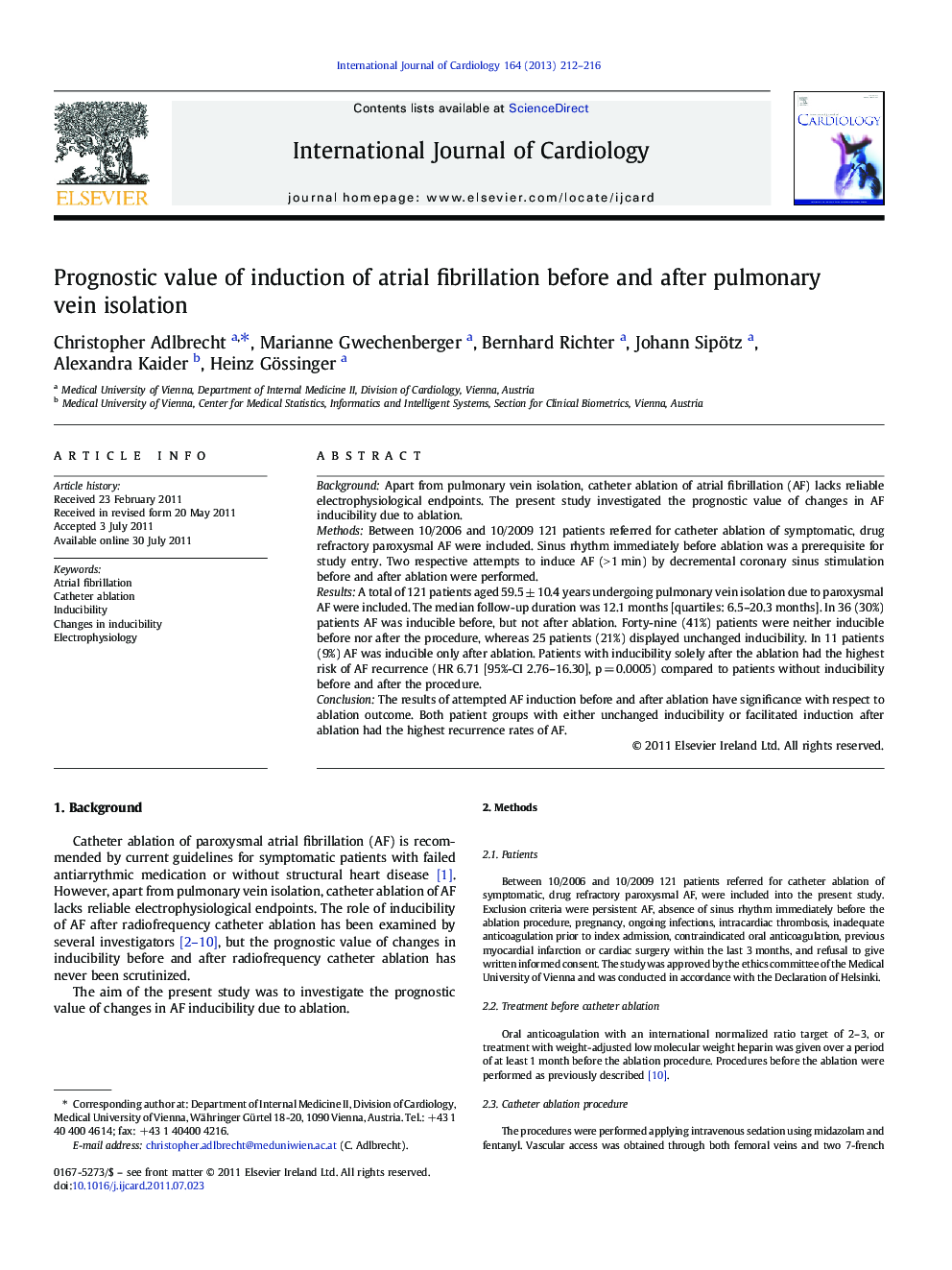| Article ID | Journal | Published Year | Pages | File Type |
|---|---|---|---|---|
| 5977641 | International Journal of Cardiology | 2013 | 5 Pages |
BackgroundApart from pulmonary vein isolation, catheter ablation of atrial fibrillation (AF) lacks reliable electrophysiological endpoints. The present study investigated the prognostic value of changes in AF inducibility due to ablation.MethodsBetween 10/2006 and 10/2009 121 patients referred for catheter ablation of symptomatic, drug refractory paroxysmal AF were included. Sinus rhythm immediately before ablation was a prerequisite for study entry. Two respective attempts to induce AF (> 1 min) by decremental coronary sinus stimulation before and after ablation were performed.ResultsA total of 121 patients aged 59.5 ± 10.4 years undergoing pulmonary vein isolation due to paroxysmal AF were included. The median follow-up duration was 12.1 months [quartiles: 6.5-20.3 months]. In 36 (30%) patients AF was inducible before, but not after ablation. Forty-nine (41%) patients were neither inducible before nor after the procedure, whereas 25 patients (21%) displayed unchanged inducibility. In 11 patients (9%) AF was inducible only after ablation. Patients with inducibility solely after the ablation had the highest risk of AF recurrence (HR 6.71 [95%-CI 2.76-16.30], p = 0.0005) compared to patients without inducibility before and after the procedure.ConclusionThe results of attempted AF induction before and after ablation have significance with respect to ablation outcome. Both patient groups with either unchanged inducibility or facilitated induction after ablation had the highest recurrence rates of AF.
